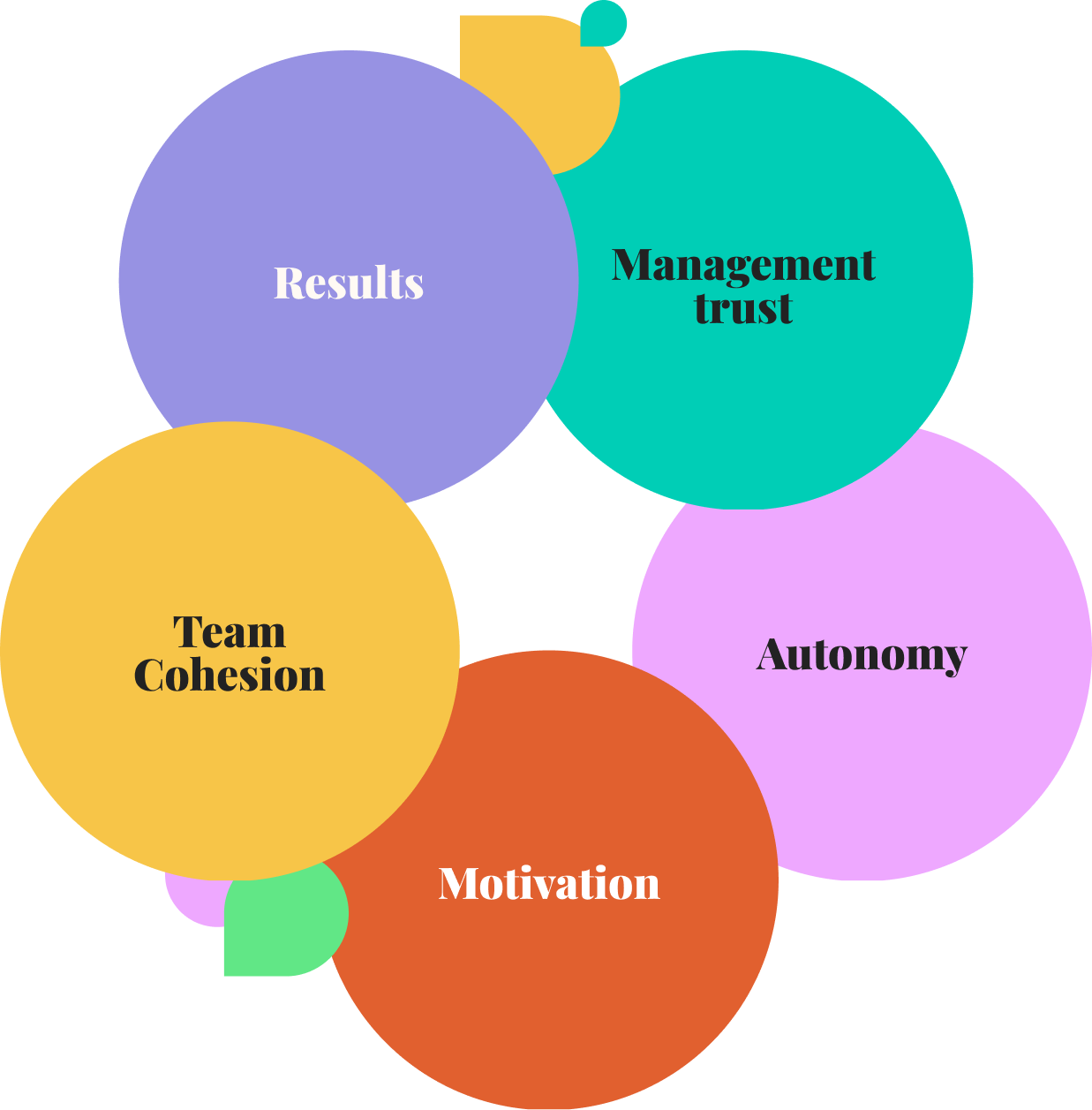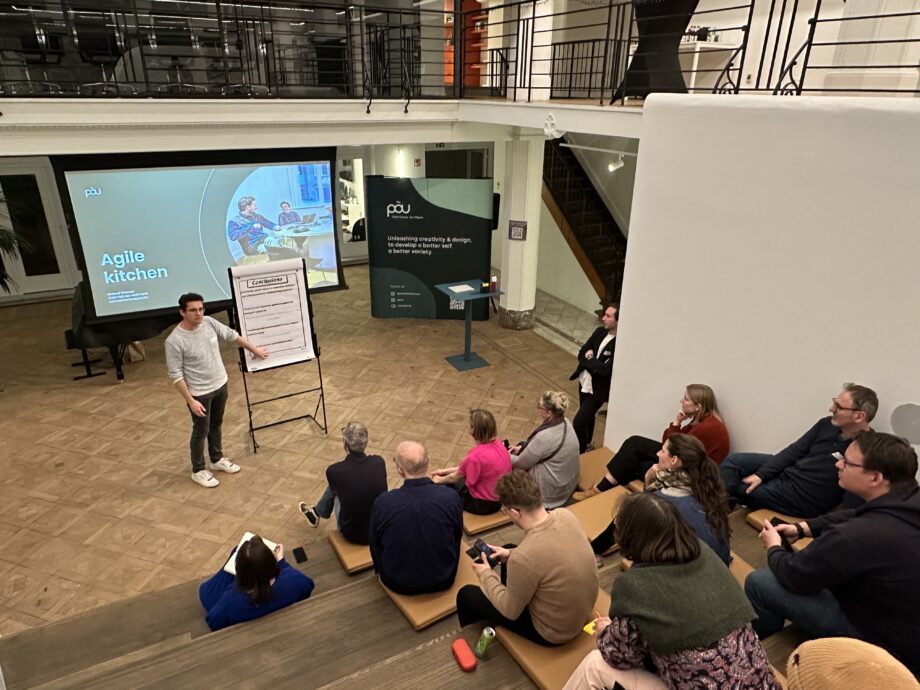In the fast-paced world of Agile, even the greatest projects can hit roadblocks that put success at risk. At this year’s first Agile Kitchen, Michael Thomas (Craft CMS Development Team Lead at Pàu) and Vincent Vanderheeren and Kris Philippaerts (Both partners at iLean) discussed the fundamental role of agility in driving customer collaboration and success.
Turning issues into opportunities
Michael kicked off the event by sharing Pàu’s story of facing challenges due to mismatched expectations between a company and its client. This had led to a lack of structure, motivation, and focus. Initially, these hurdles seemed too tough to handle, but what if they could be transformed into opportunities?
But, first things first. Michael explained how Pàu did a complete review to identify the main challenges:
- Most of the team members were juniors.
- The project didn’t have a solid structure from the start.
- The team didn’t get enough feedback from the client to make the changes they needed.
These problems left the client wondering if the team could actually get the job done. It was time to turn things around!
First step: Rethinking team dynamics
The first thing Pàu did was rethink the team dynamics, blending both junior and senior members for a better dynamic. This mix created a more vibrant environment where experienced employees could mentor newer ones, empowering teamwork and knowledge-sharing.
Having people with different levels of experience didn’t just spark lots of fresh ideas and ways of thinking, but also led to smarter decisions. Now that’s what we call a winning team!
Second step: Optimizing structure with Kanban
In the next stage, Michael and his team set up visualizations to bring more structure and clarity to the delivery process. This revamped structure helped maintain a smooth workflow, facilitated better communication, and allowed everyone to respond more effectively to changes and challenges.
Third step: Conducting regular retrospectives
Pàu also decided to incorporate sprint retrospectives to fine-tune their processes. This approach was an opportunity for the team to reflect on their work, learn from their experiences, and adapt as necessary. Hello, increased productivity, quality, and satisfaction! On top of that, the team set up a dedicated task force focused on strengthening the relationship with the client and rebuilding trust.
By also including interactive demos in discussions, everyone was encouraged to share their unique perspectives on the project’s progress. Open communication is always the key!
Leveraging cadence: From methodologies to problem-solving
Following Michael’s presentation, Kris from iLean took the stage to discuss the concept of ‘cadences.’ Instead of focusing on standard frameworkslike Scrum, Kanban, or SAFe, he underlined the significance of focusing on the overarching ambition, identifying potential leverage, and establishing a rhythm to drive improvement. The fundamental concept of cadences offers a structured approach to help align teams and create commitment toward achieving this common goal.
Cadence for continuous improvements
A cadence is a regular, predictable rhythm or cycle of events and activities. It helps establish a consistent pace and structure for the development process, significantly improving collaboration, synchronization, and continuous improvement. Different frameworks come with their own implementations of this concept, such as Sprints in Scrum, PI Plannings in SAFe, Cadence meetings in Kanban.
Kris shared a four-step approach to establishing a new cadence:
- Set a clear, compelling ambition: Decide what you want to achieve and make sure everyone understands the desired outcome.
- Understand the problem and needs: Build understanding regarding the main opportunities that need to be addressed.
- Spot levers for change: Find things that can help make the current problems better or lead to positive changes.
- Stay on track for success: Establish a rhythm to help everyone stay on track and nudge everyone working towards success.
After that, Kris invited the audience to apply the four steps to the Paú case study. This practical approach got everyone actively participating and helped them really grasp the idea of cadence.
Introducing systems thinking: The Butterfly Effect
Finally, it was Vincent’s turn to take the stage. He delved deeper into the concept of systems thinking, an approach that urges people to move beyond linear thinking and recognize the interconnections between different elements within a system. By embracing this concept, teams can increase their circle of influence by sharing their mental models and assumptions and enriching their understanding. In summary, systems thinking fosters a more adaptive and responsive environment, inspiring teams to navigate complexity better.
How Systems Thinking and Cadences are connected
Systems thinking and cadence are closely linked, as both play crucial roles in enhancing the effectiveness and success of pursuing an ambition. Systems thinking offers a holistic approach to understanding the complexity of a certain problem area by reducing the problem scope and fostering discussions that help recognize the potential interconnections between different elements and their mutual impact. This perspective allows people to identify patterns, grasp underlying dynamics, and pinpoint areas for improvement. Cadence and Systems thinking both acknowledge that continuously incorporating new information and insights enhances the learning and adaptability necessary for achieving specific goals.
Vincent used an interesting metaphor to clarify the concept of systems thinking. Imagine a fragile butterfly flapping its wings, and on the opposite side of the globe, a huge tornado takes shape. This is the butterfly effect – a concept illustrating how small changes can trigger significant consequences.
“Rather than trying to prevent the butterfly from flapping its wings to avoid the tornado, it is more effective to identify the levers or pivot points within the situation.”
Henri Poincaré
He shared this example to drive home an important point: rather than trying to prevent the butterfly from flapping its wings to avoid a tornado; it is more effective to identify the levers or pivot points within the situation. By reducing the problem scope, identifying the key variables and interconnections, and redirecting the reaction, entirely new outcomes can be created, turning obstacles into opportunities for growth and innovation. But then again as Peter Senge mentioned in his Systems Thinking laws: “Small changes can produce big results, but areas of the highest leverage are often least obvious.”
Without further ado, it was time to let ideas fly (see what we did there?) and turn them into action! Vincent split the participants into groups to tackle real-life scenarios, translating them into loops or cadences. After identifying the loops, they were encouraged to brainstorm levers or pivot points that could transform a vicious cycle into a virtuous one.
One participant, for example, was part of a team that lacked direction, faced low trust from management, had little motivation, and experienced weak cohesion among team members. Their existing loop looked like this:

To address these challenges, the participants understood that their teamwork was a big contributor to low management trust. The team adopted a more proactive facilitation role and made structural changes in their events, in particular introducing a daily follow-up and increasing the effectiveness of their retrospectives. They succeeded in making the process more interactive overall. The outcome was multifaceted: strengthened collaboration within the team, which in turn reinforced management’s trust and heightened progress.
“So, what did we learn today?”
Kris and Vincent concluded the event with a few key takeaways:
- Reflect on ambitions and ensure they align with your current approach.
- Initiate conversations to identify the best ways to achieve your goals.
- Embrace the power of successful cadences to transform willpower into commitment.
As the session drew to a close, the atmosphere shifted from thought-provoking discussions to a vibrant networking event. Attendees mingled and exchanged ideas over delicious refreshments, all while enjoying the picturesque Pàu venue.
Learning from industry experts is always valuable. If you’re also excited about our next Agile Kitchen event, keep an eye on our calendar for upcoming dates and events!

